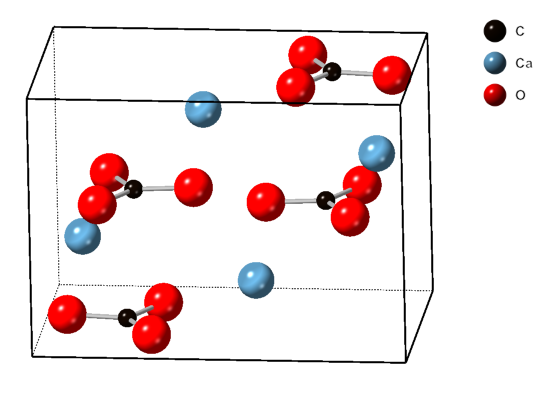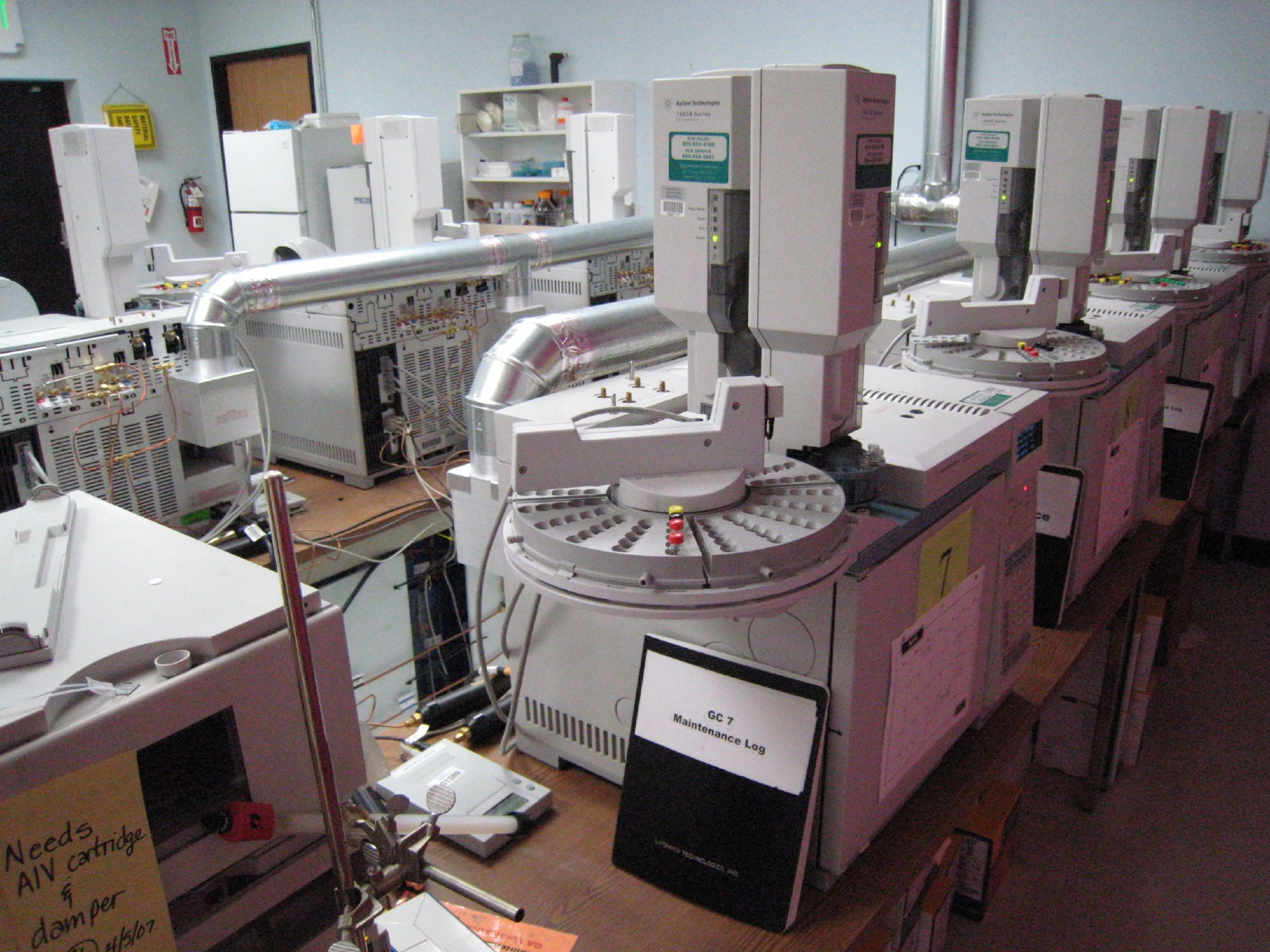|
Ammolite
Ammolite is an opal-like organic gemstone found primarily along the eastern slopes of the Rocky Mountains of North America. It is commonly unearthed by natural erosion or through the process of various mining practices, within the perimeter of an ancient sea bed called the Western Interior Seaway. It is made of the fossilized shells of ammonites, which in turn are composed primarily of aragonite, the same mineral contained in nacre, with a microstructure inherited from the shell. It is one of few biogenic gemstones; others include amber and pearl. In 1981, ammolite was given official gemstone status by the World Jewellery Confederation (CIBJO), the same year commercial mining of ammolite began. It was designated the official gemstone of Lethbridge, Alberta, Canada in 2007, and was subsequently designated as Alberta's official gemstone in April 2022. Ammolite is also known as ''aapoak'' ( Kainah for "small, crawling stone"), ''gem ammonite'', calcentine, and korite. The latter ... [...More Info...] [...Related Items...] OR: [Wikipedia] [Google] [Baidu] |
Kainah
The Kainai Nation () (, or , romanized: ''Káínawa'', Blood Tribe) is a First Nations band government in southern Alberta, Canada, with a population of 12,965 members in 2024, up from 11,791 in December 2013. translates directly to 'many chief' (from , 'many' and , 'chief') while translates directly to 'many chief people'. The enemy Plains Cree call the Kainai , 'stained with blood', thus 'the bloodthirsty, cruel', therefore, the common English name for the tribe is the ''Blood tribe''. The Kainai speak a language of the Blackfoot linguistic group; their dialect is closely related to those of the Siksika and Piikani. They are one of three nations comprising the Blackfoot Confederacy. At the time treaties such as Treaty 7 were signed, the Kainai were situated on the Oldman, Belly, and St. Mary rivers west of Lethbridge, Alberta. The Kainai reserve Blood 148 is currently the largest in Canada with 4,570 inhabitants on and is located south of Calgary. Economy ... [...More Info...] [...Related Items...] OR: [Wikipedia] [Google] [Baidu] |
Korite
Korite is the largest commercial producer of ammolite. The company produces natural ammolite gemstones and jewelry. Korite is based in Calgary, Alberta, Canada. The firm's sister company, Canada Fossils Ltd., provides it with ammonites and other fossils. It is a member of the American Gem Trade Association. On September 27, 2007, an ammonite fossil 80 million years old and 60 cm (two ft) in diameter of ammonite made its debut at the American Museum of Natural History in New York. Neil Landman, curator, said that it became extinct Extinction is the termination of an organism by the death of its Endling, last member. A taxon may become Functional extinction, functionally extinct before the death of its last member if it loses the capacity to Reproduction, reproduce and ... 66 million years ago, at the time of the dinosaurs. Korite donated it after its discovery in Alberta. Korite received creditor protection on June 30, 2020. The company reported losses of C$2.4 mi ... [...More Info...] [...Related Items...] OR: [Wikipedia] [Google] [Baidu] |
Aragonite
Aragonite is a carbonate mineral and one of the three most common naturally occurring crystal forms of calcium carbonate (), the others being calcite and vaterite. It is formed by biological and physical processes, including precipitation from marine and freshwater environments. The crystal lattice of aragonite differs from that of calcite, resulting in a different crystal shape, an orthorhombic crystal system with acicular crystal. Repeated twinning results in pseudo-hexagonal forms. Aragonite may be columnar or fibrous, occasionally in branching helictitic forms called ''flos-ferri'' ("flowers of iron") from their association with the ores at the Carinthian iron mines. Occurrence The type location for aragonite is Molina de Aragón in the Province of Guadalajara in Castilla-La Mancha, Spain, for which it was named in 1797. Aragonite is found in this locality as cyclic twins inside gypsum and marls of the Keuper facies of the Triassic. This type of aragoni ... [...More Info...] [...Related Items...] OR: [Wikipedia] [Google] [Baidu] |
Ammonite
Ammonoids are extinct, (typically) coiled-shelled cephalopods comprising the subclass Ammonoidea. They are more closely related to living octopuses, squid, and cuttlefish (which comprise the clade Coleoidea) than they are to nautiluses (family Nautilidae). The earliest ammonoids appeared during the Emsian stage of the Early Devonian (410.62 million years ago), with the last species vanishing during or soon after the Cretaceous–Paleogene extinction event (66 million years ago). They are often called ammonites, which is most frequently used for members of the order Ammonitida, the only remaining group of ammonoids from the Jurassic up until their extinction. Ammonoids exhibited considerable diversity over their evolutionary history, with over 10,000 species having been described. Ammonoids are excellent index fossils, and they have been frequently used to link rock layers in which a particular species or genus is found to specific Geologic time scale, geologic time periods. Their ... [...More Info...] [...Related Items...] OR: [Wikipedia] [Google] [Baidu] |
Barium
Barium is a chemical element; it has symbol Ba and atomic number 56. It is the fifth element in group 2 and is a soft, silvery alkaline earth metal. Because of its high chemical reactivity, barium is never found in nature as a free element. The most common minerals of barium are barite ( barium sulfate, BaSO4) and witherite ( barium carbonate, BaCO3). The name ''barium'' originates from the alchemical derivative "baryta", from Greek (), meaning 'heavy'. ''Baric'' is the adjectival form of barium. Barium was identified as a new element in 1772, but not reduced to a metal until 1808 with the advent of electrolysis. Barium has few industrial applications. Historically, it was used as a getter for vacuum tubes and in oxide form as the emissive coating on indirectly heated cathodes. It is a component of YBCO (high-temperature superconductors) and electroceramics, and is added to steel and cast iron to reduce the size of carbon grains within the microstructure. Barium compounds ... [...More Info...] [...Related Items...] OR: [Wikipedia] [Google] [Baidu] |
Aluminium
Aluminium (or aluminum in North American English) is a chemical element; it has chemical symbol, symbol Al and atomic number 13. It has a density lower than that of other common metals, about one-third that of steel. Aluminium has a great affinity towards oxygen, passivation (chemistry), forming a protective layer of aluminium oxide, oxide on the surface when exposed to air. It visually resembles silver, both in its color and in its great ability to reflect light. It is soft, magnetism, nonmagnetic, and ductility, ductile. It has one stable isotope, 27Al, which is highly abundant, making aluminium the abundance of the chemical elements, 12th-most abundant element in the universe. The radioactive decay, radioactivity of aluminium-26, 26Al leads to it being used in radiometric dating. Chemically, aluminium is a post-transition metal in the boron group; as is common for the group, aluminium forms compounds primarily in the +3 oxidation state. The aluminium cation Al3+ ... [...More Info...] [...Related Items...] OR: [Wikipedia] [Google] [Baidu] |
Analytical Chemistry
Analytical skill, Analytical chemistry studies and uses instruments and methods to Separation process, separate, identify, and Quantification (science), quantify matter. In practice, separation, identification or quantification may constitute the entire analysis or be combined with another method. Separation isolates analytes. Qualitative inorganic analysis, Qualitative analysis identifies analytes, while Quantitative analysis (chemistry), quantitative analysis determines the numerical amount or concentration. Analytical chemistry consists of classical, wet chemistry, wet chemical methods and modern analytical techniques. Classical qualitative methods use separations such as Precipitation (chemistry), precipitation, Extraction (chemistry), extraction, and distillation. Identification may be based on differences in color, odor, melting point, boiling point, solubility, radioactivity or reactivity. Classical quantitative analysis uses mass or volume changes to quantify amount. Ins ... [...More Info...] [...Related Items...] OR: [Wikipedia] [Google] [Baidu] |
Doublet (lapidary)
A doublet is a type of assembled gem composed of two horizontal sections. It is sometimes used to imitate other, more expensive gems. A garnet and glass doublet uses a top portion of natural garnet fused to any color of glass to imitate a gem. The color of glass used in the doublet is all that is seen, as the garnet provides no color. If seen in reflected light, a separation line may be seen. A harder garnet makes the stones more durable. In the case of opal doublets, a backing layer of onyx or matrix (ironstone Ironstone is a sedimentary rock, either deposited directly as a ferruginous sediment or created by chemical replacement, that contains a substantial proportion of an iron ore compound from which iron (Fe) can be smelted commercially. Not to be c ...) gives the more fragile opal layer support and can make the opal look darker and higher quality. Garnet and glass doublets were first used around 1850 when it was noted that molten glass would adhere to garnet. It was ... [...More Info...] [...Related Items...] OR: [Wikipedia] [Google] [Baidu] |
Alberta
Alberta is a Provinces and territories of Canada, province in Canada. It is a part of Western Canada and is one of the three Canadian Prairies, prairie provinces. Alberta is bordered by British Columbia to its west, Saskatchewan to its east, the Northwest Territories to its north, and the U.S. state of Montana to its south. Alberta and Saskatchewan are the only two landlocked Canadian provinces. The eastern part of the province is occupied by the Great Plains, while the western part borders the Rocky Mountains. The province has a predominantly humid continental climate, continental climate, but seasonal temperatures tend to swing rapidly because it is so arid. Those swings are less pronounced in western Alberta because of its occasional Chinook winds. Alberta is the fourth largest province by area, at , and the fourth most populous, with 4,262,635 residents. Alberta's capital is Edmonton; its largest city is Calgary. The two cities are Alberta's largest Census geographic units ... [...More Info...] [...Related Items...] OR: [Wikipedia] [Google] [Baidu] |
Lethbridge
Lethbridge ( ) is a city in the province of Alberta, Canada. With a population of 106,550 in the 2023 Alberta municipal censuses, 2023 municipal census, Lethbridge became the fourth Alberta city to surpass 100,000 people. The nearby Canadian Rockies, Canadian Rocky Mountains contribute to the city's warm summers, mild winters, and Chinook wind, windy climate. Lethbridge lies approximately southeast of Calgary on the Oldman River and northwest of the Canada–United States border at the Sweetgrass–Coutts Border Crossing. Lethbridge is the commercial, educational, financial, industrial and transportation centre of southern Alberta. The city's economy developed from drift mining for coal in the late 19th century and agriculture in the early 20th century. Half of the workforce is employed in the health, education, retail and hospitality sectors, and the top five employers are government-based. The University of Lethbridge, the only university in Alberta south of Calgary, is l ... [...More Info...] [...Related Items...] OR: [Wikipedia] [Google] [Baidu] |
World Jewellery Confederation
The World Jewellery Confederation ( (CIBJO)), has its headquarters in Bern, Switzerland. It represents the interests of all involved in jewellery, gemstones, and precious metals, from mine to marketplace. History Founded in Paris in 1926 as BIBOA to represent the interests of the European jewellery trade, it was restructured in 1961 as CIBJO with a worldwide focus. Representing individuals and companies across the diamond, gemstone, jewelry and precious metal sectors, its membership spans over 40 countries. In 2006, CIBJO received consultative status with the Economic and Social Council (ECOSOC) of the United Nations. Article 71 of the UN Charter, which allows for CIBJO to consult with ECOSOC, governments, and the UN Secretariat on behalf of matters concerning the gem and jewelry trade. CIBJO serves to protect the trust of consumers relying on the jewelry industry, protecting their interests and regulating standards within the trade. The non-profit has an annual Congress, which ser ... [...More Info...] [...Related Items...] OR: [Wikipedia] [Google] [Baidu] |
Tortoiseshell Material
Tortoiseshell or tortoise shell is a material produced from the shells of the larger species of tortoise and turtle, mainly the hawksbill sea turtle, which is a critically endangered species according to the IUCN Red List largely because of its exploitation for this trade. The large size, fine color, and unusual form of the hawksbill's scutes make it especially suitable. The distinctive patterning is referred to in names such as the tortoiseshell cat, several breeds of guinea pig, and the common names of several species of the butterfly genera '' Nymphalis'' and '' Aglais'', and some other uses. Uses Tortoiseshell was widely used from ancient times in the North and in Asia, until the trade was banned in 2014. It was used, normally in thin slices or pieces, in the manufacture of a wide variety of items such as combs, small boxes and frames, inlays in furniture (known as Boulle work carried out by André-Charles Boulle), and other items: frames for spectacles, guitar picks and k ... [...More Info...] [...Related Items...] OR: [Wikipedia] [Google] [Baidu] |









